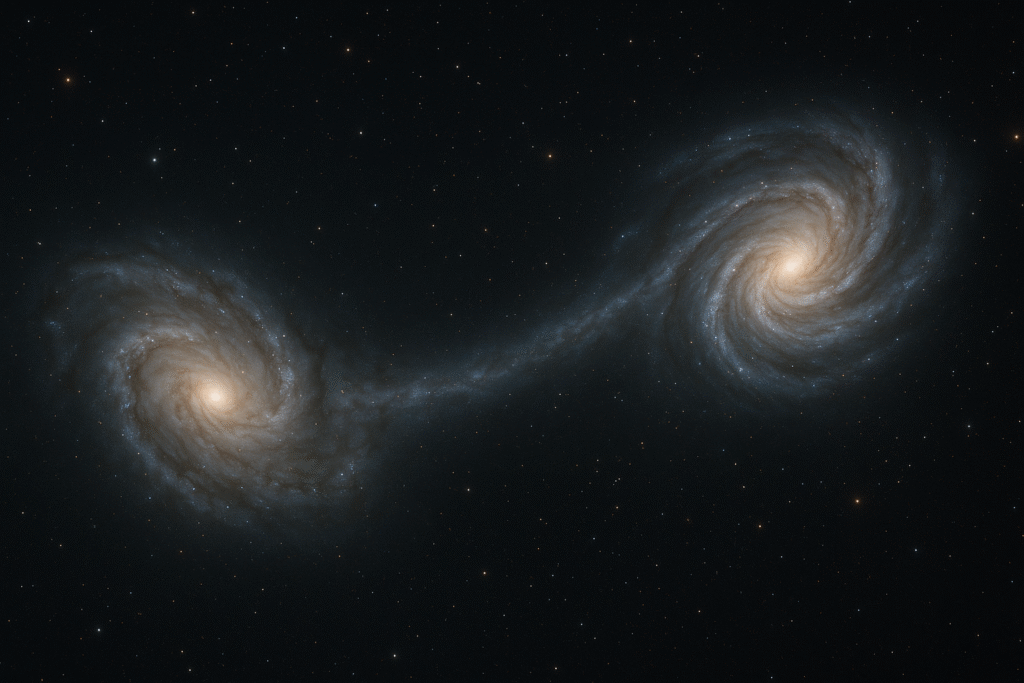By Harshit | September 24, 2025 | Perth, Australia | 11:10 AM EST
A Colossal Discovery in Deep Space
Astronomers at the International Centre for Radio Astronomy Research (ICRAR) in Perth have uncovered a hydrogen bridge stretching an astonishing 185,000 light-years between two dwarf galaxies, NGC 4532 and DDO 137. Even more striking, the bridge trails a gas tail extending 1.6 million light-years—making it the longest galactic structure of its kind ever observed.
Located 53 million light-years away from Earth, this pair of galaxies lies just south of the Virgo cluster. The discovery sheds light on how galaxies interact and evolve in crowded regions of the universe.
Tidal Forces and a Cosmic “Blowtorch”
The bridge and tail are products of immense tidal forces as the galaxies orbit each other, described by researchers as “dancers caught in a gravitational whirl.” But gravity isn’t the only factor at play.
As the galaxies drift closer to the superheated gas cloud of the Virgo cluster—200 times hotter than the Sun’s surface—they encounter ram pressure, a powerful cosmic wind that strips and heats their gas.
“It’s like watching a satellite burn up in Earth’s atmosphere, only stretched over a billion years,” said lead author Professor Lister Staveley-Smith of ICRAR–UWA.
This process sculpts the colossal structures now observed, creating one of the most dramatic examples of galaxy interaction ever recorded.
Neutral Hydrogen: Fuel for New Stars
Co-author Professor Kenji Bekki explained that the team identified the formation using high-resolution observations of neutral hydrogen, the fundamental ingredient for star formation.
The presence of such a massive hydrogen bridge could help astronomers understand how galaxies recycle gas, ignite star birth, and evolve under extreme conditions.
“Discovering a bridge of this scale is a game-changer,” Bekki said. “It tells us how galaxies grow and adapt, especially when surrounded by other large cosmic structures.”
Echoes of the Milky Way’s Past
Interestingly, the system shows similarities to our own Milky Way and the Magellanic Clouds, which are also connected by hydrogen streams. Studying NGC 4532 and DDO 137 could offer fresh insights into the past and future of our galaxy’s interactions.
Prof. Staveley-Smith noted that these structures help astronomers better grasp the circulation of galactic gas and the broader conditions that spark star formation.
Unlocking the Universe’s Evolution
By mapping hydrogen bridges and tails, scientists gain a clearer picture of how galaxies transform over cosmic history. From small-scale interactions to the growth of the largest structures in the universe, these findings are reshaping theories about how galaxies form stars, merge, and survive in harsh cosmic environments.
“This discovery deepens our understanding of the most significant structures in the universe,” Staveley-Smith said. “It’s a step toward unlocking how galaxies evolve and create stars throughout time.”







